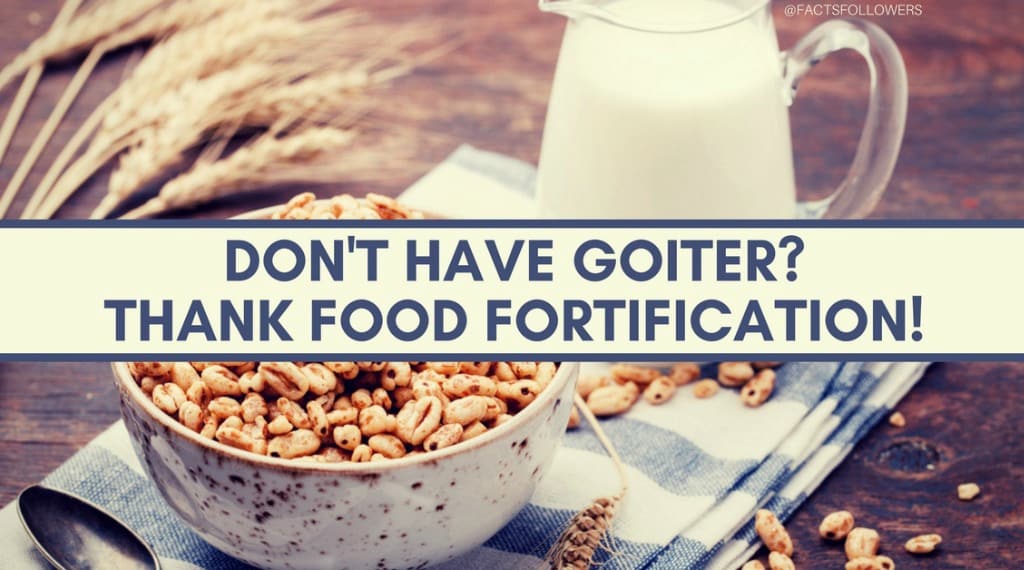The goiter belt is a term for parts of the U.S. (including the Great Lakes region and Appalachia) where soil levels of iodine are naturally low and iodine-rich foods like seafood and seaweed are not exactly dietary staples. Before the 1920s, over half of the population in some parts of this region had goiter, an abnormal enlargement of the thyroid gland caused by insufficient iodine intake.
Why don’t we have goiter?
In 1924, the U.S. started fortifying salt with iodine, which virtually eradicated the goiter problem.
Because of fortification, we don’t have goiter. Or beriberi, pellagra, and rickets.
Fortification, or adding nutrients (like iodine) to foods (like salt), has been one of the most successful public health interventions in U.S. history and has virtually eliminated diseases, like goiter, that are caused by nutrient deficiencies.
Beriberi, pellagra, and rickets are also diseases of nutrient deficiencies that have mostly disappeared, thanks to fortification of other foods with thiamin, niacin, and Vitamin D.
Food that have nutrients added to them are also sometimes called enriched foods.
While the terms “fortified” and “enriched” can be used interchangeably sometimes, enrichment typically refers to adding nutrients lost during food handling, processing, or storage back to a food. Fortification, on the other hand, generally refers to foods that have had nutrients added to them that are not naturally occurring in that food (like iodine added to salt).
Unlike fortified foods, many enriched foods must have specific amounts of certain vitamins added to them to meet official FDA definitions. One well-known enriched food is refined wheat flour, i.e. white flour. Enriched flour must contain specific amounts of B vitamins (thiamin, riboflavin, niacin, and folic acid) and iron. Calcium is sometimes added to enriched flour as well.
Just as iodine is added to salt to prevent goiter, these B vitamins and iron are added to refined flour to prevent health problems associated with low intake of certain nutrients. Several types of flours and breakfast cereals, for instance, have been fortified with folic acid since 1998, because sufficient folic acid consumption by pregnant women may help prevent birth defects known as neural tube defects.
Benefits beyond grains:
Several other foods on the market besides white flour and salt are also often fortified or enriched:
- Corn masa flour
- Milk
- Vitamins A and D are often added to milk, which is important since vitamin D tends to be underconsumed by Americans. Check the milk labels to make sure the milk you choose contains these extra vitamins.
- Plant-based milks
- Fruit juice
- Some fruit juices are fortified with vitamin D and calcium, another nutrient that Americans underconsume.
- White rice
- Like white flour, enriched white rice has thiamin, niacin, folic acid, and iron added. Don’t rinse rice before cooking to retain these extra nutrients!
- Breakfast cereals
- Many breakfast cereals are fortified as well and can help increase intake of important micronutrients like B vitamins, vitamins A, C, D, and E, calcium, iron, magnesium, and zinc. Check the nutrition facts panel to see which nutrients might be in your favorite cereal.
Bottom line?
Fortification and enrichment of certain foods contribute important nutrients to the American diet. And, in the process, they help protect us from goiter.
